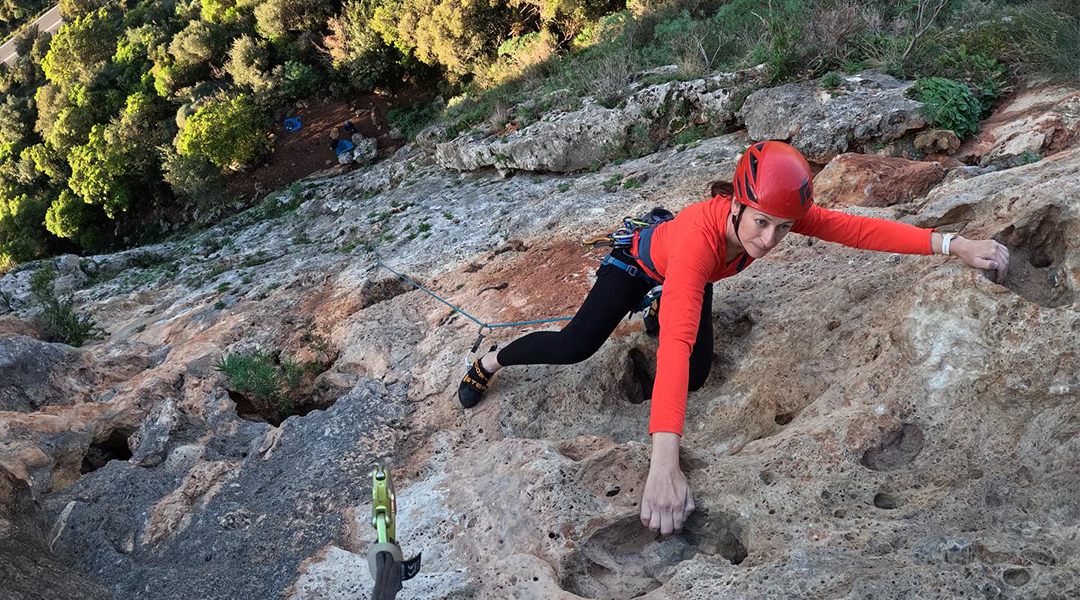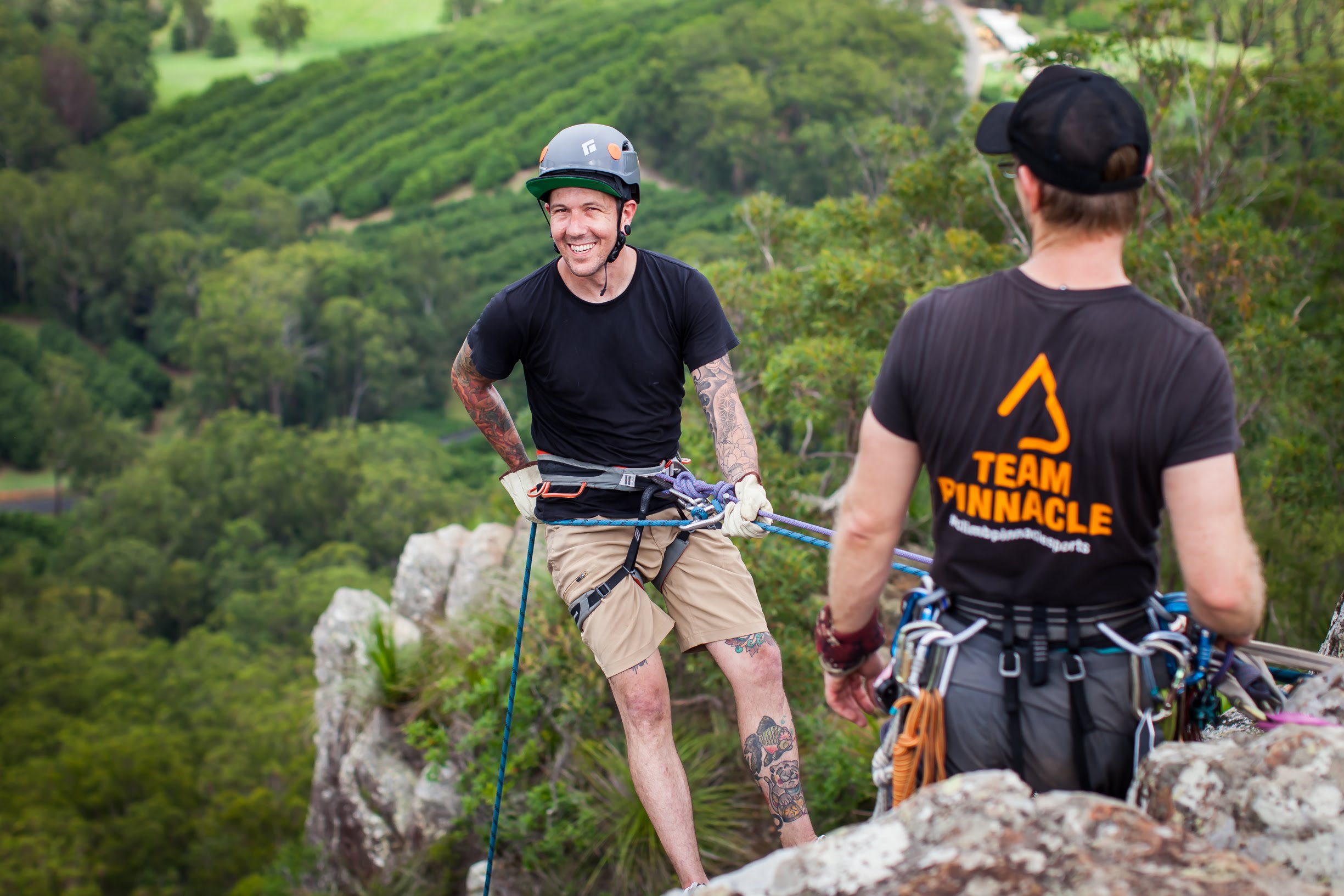
It can be daunting committing to building your own setups and owning your own gear, which is why we're here to make the process easy. Below is an essential list of kit you'll find in a sport lead setup at a crag like Kangaroo Point. Come find us in-store if you have any questions about the gear involved. If you are unsure how to safely lead outdoor or need a refresher, Pinnacle Sports offers courses taught by qualified instructors to get you on your way.
ESSENTIAL KIT:
Quickdraws. Consider having 10 -12 quickdraws on your harness for a single pitch sport route. It's a good idea to have at least a couple of longer draws for awkward clips, or to extend rope over a bulge so there's less wear. Alternatively, depending on how you're setting up your sport lead anchors for a top rope climb, it's useful to have a few different lengths so it's easier to equalise the quickdraw. For more information on quickdraws click here.
Dynamic Rope. Consider a 60m length at a minimum for single pitch sport climbs around South East Queensland. Ropes in the 9.8 - 10.5 range make great workhorse rope that can cope with some abuse, making them ideal for the gym, extended top-roping, locations with rough rock and a first rope purchase. Check out the Edelrid Taipan and the Beal Antidote. For a good, all-round rope that will take a bit of a beating without being overly burdensome, look at something between 9.4 and 9.7. For more information on dynamic ropes click here.
Locking Carabiners. You can never have enough locking carabiners! Small profile carabiners are useful for safties (the narrower profile should fit through most chain or bolt plates). They are also useful for prussics. You should look at having at least three locking carabiners. Consider also having one carabiner that is a different colour from your other locking carabiners that will always be the first safety attachment and the last to be removed after all your checks are done! For more information on carabiner types click here.
Belay Carabiner. A belay carabiner ensures that your belay device stays in the correct orientation and will not cross load. This is definitely a handy option! The only disadvantage is that this carabiner has a very specific use, however we still believe it's worth the extra investment.
Belay Device. Assisted breaking devices are great if your climbing partner is working a route, or if you have a less experienced person on belay. When used correctly, assisted breaking devices can offer greater protection, decreasing the probability of dropping a lead climber while making it much easier to lock off and hold someone for long periods of time. However, they do have their limitations; for example that they mostly designed for single ropes (ie you cannot complete a retrievable abseil using these devices). For this reason, a tubular device is also useful to have on hand. For more information on belay devices click here.
Helmet. Cliffs are dynamic entities! Rocks can and do fall off. Other possible projectiles may include gear or objects punted by the general public.. It is also possible to experience an uncontrolled fall during a climbing session which increases the possibility of a head knock. All of the above are sound reasons to be wearing a helmet! Helmets are split into two categories these being hard and soft shell. Hard shell helmets will be more durable but heavier, soft shell helmets are lighter and more comfortable but are not as sturdy as a soft shell. There are also now hybrid helmets which sit between the two categories. Whatever you choose, any helmet is better than none! For more information on helmets click here.
Prussiks. A simple yet amazing third hand or safety. Usually this would be made from 6mm cord although it depends on the diameter of your rope. Pre sewn prussiks are also avaialble such the Sterling Hollowblock or Beal Jammy.
Rope Bag. A rope bag keeps your rope cleaner whilst out at a crag and makes feeding out slightly easier as they will have two tie in points so your rope is less likely to get tangled when you spooled your rope. It also means your rope is remains cleaner when stored and is not exposed to additional UV light. The simplest bags have a should strap only which is great for short walk ins or if you have a larger hiking pack. For longer walk ins consider a rope bag with back pack straps.
The above items are what we'd consider essential for outdoor lead climbing. We've listed some additional pieces of equipment below which make your lead climbing experience a lot nicer!
Optional Extras
- Stick Clip
- Bolt Plates for those delightful carrot bolts that are still hanging around
- Belay Glasses
- Clipgates and slings to make extendable draws
- Guide Book
- Poop Scoop / Dry Bag / (Leave to Trace)
- Headtorch
More questions? Drop in and see our team in store at 1/237 Montague Road, West End Brisbane 4101 during opening hours ;)
Looking for more great reads? Subscribe to our newsletter to stay up to date with the latest climbing tech, crag recommendations and upcoming events.







